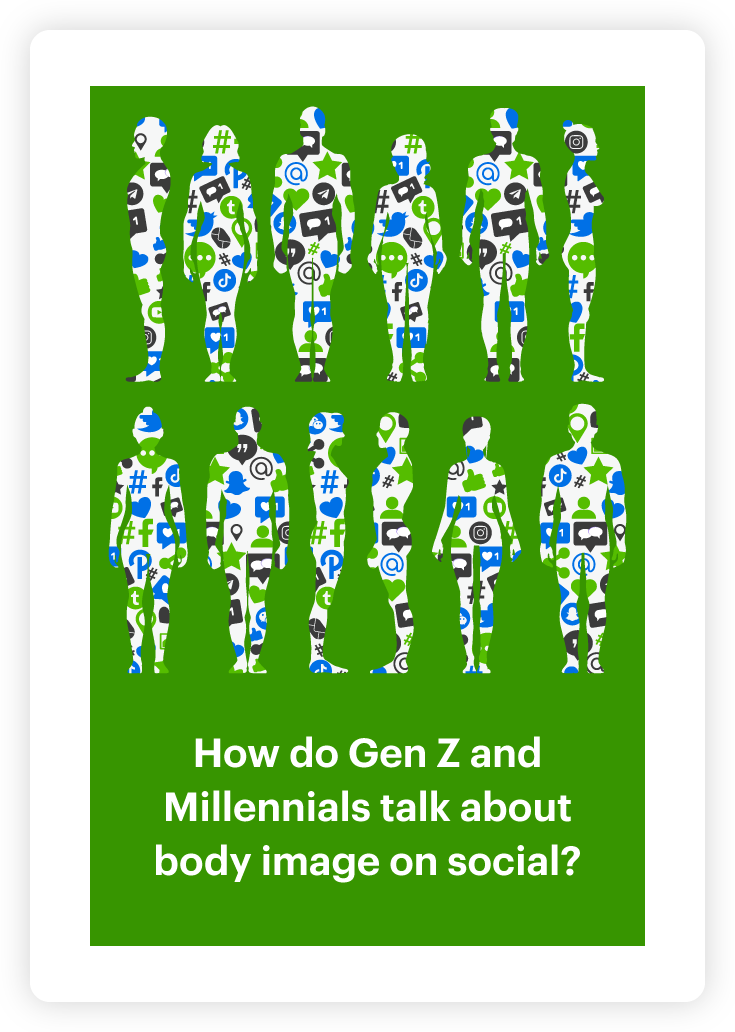Agencies’ use of social content to advertise themselves
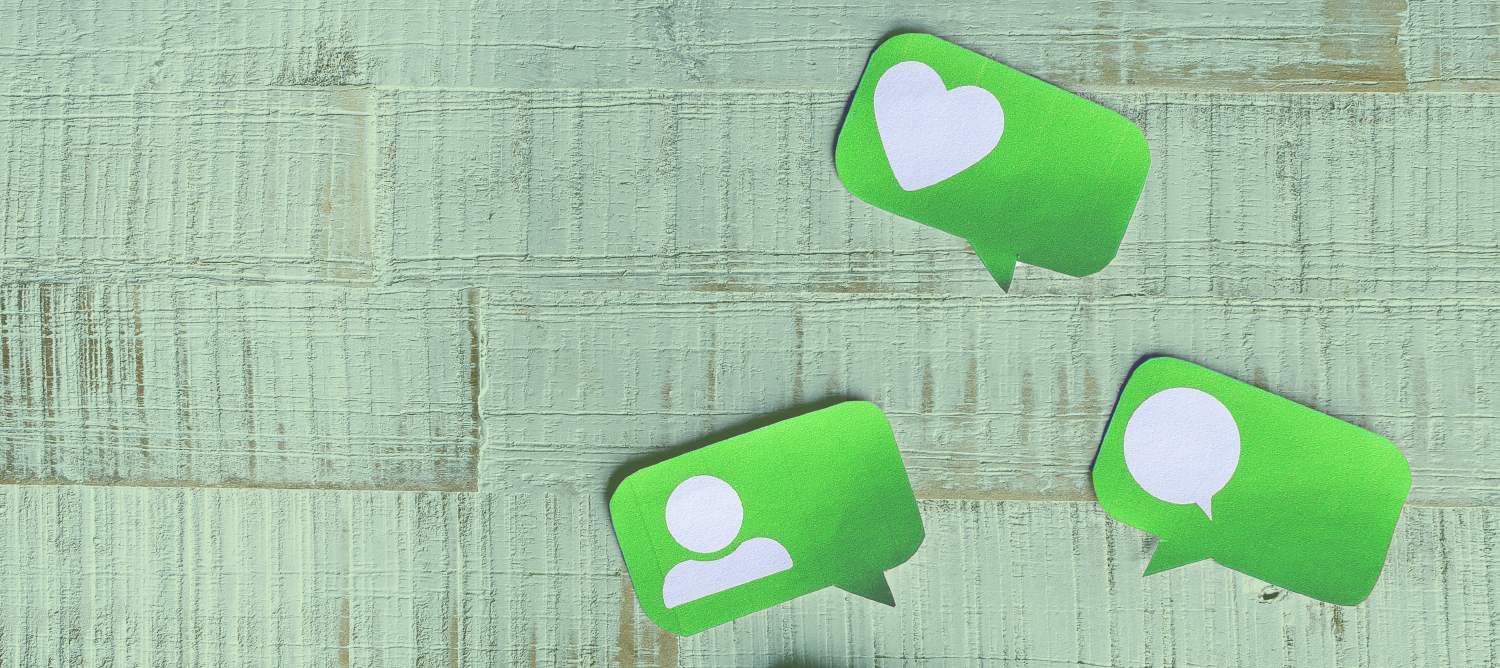
Advertising agencies are the experts when it comes to creativity and marketing. Yet despite inherently believing in the power of advertising, why do so few agencies advertise themselves?
Of course, an agency’s main focus is client work. However, just like any business, it’s important that agencies promote themselves and establish a brand identity in order to cultivate a sustainable client base. To better understand agencies’ use of social content to promote themselves, we were curious to analyze how creative agencies leverage social platforms to engage with their audiences and potential clients.
To find out, we looked at the Twitter channels of agencies that have been shortlisted for UK Advertising Agency of the Year at Campaign’s hotly-anticipated Agency of the Year awards. This list includes defending champions Adam&Eve/DDB, Droga5 London, McCann UK, Mother London, Pablo, The Brooklyn Brothers, Uncommon Creative Studio and VCCP.
Looking at all eight Twitter handles, there was a clear split between agencies with high and low engagement rates. So, we decided to compare these two groups to understand whether language choice bares any influence on social engagement, and how low-engagement agencies can improve their brand communications on social.
How we did it
Firstly, we used a social listening tool to pull all agency tweets spanning from January to December 2020. We then fed this data into Relative Insight, a text analytics software, to gain an additional layer of social insights. Using the combine function, we created two groups:
High engagement agencies: Adam&Eve/DDB, Mother London, Droga5 London, McCann UK
Low engagement agencies: Pablo, The Brooklyn Brothers, Uncommon Creative Studio and VCCP
Finally, we built a comparison. Relative’s comparative approach to qualitative analysis pinpoints the statistically significant differences and similarities in words, phrases and topics between each language asset. Here’s what we found:
High engagement agencies
Awards and achievements
All eight agencies in this comparison represent the cream of the crop when it comes to advertising. However, those agencies with higher engagement on Twitter are 9.8x more likely to promote the awards they have won on social. Further, these agencies use positive language such as excited to describe their achievements, which clearly resonates with their audiences.
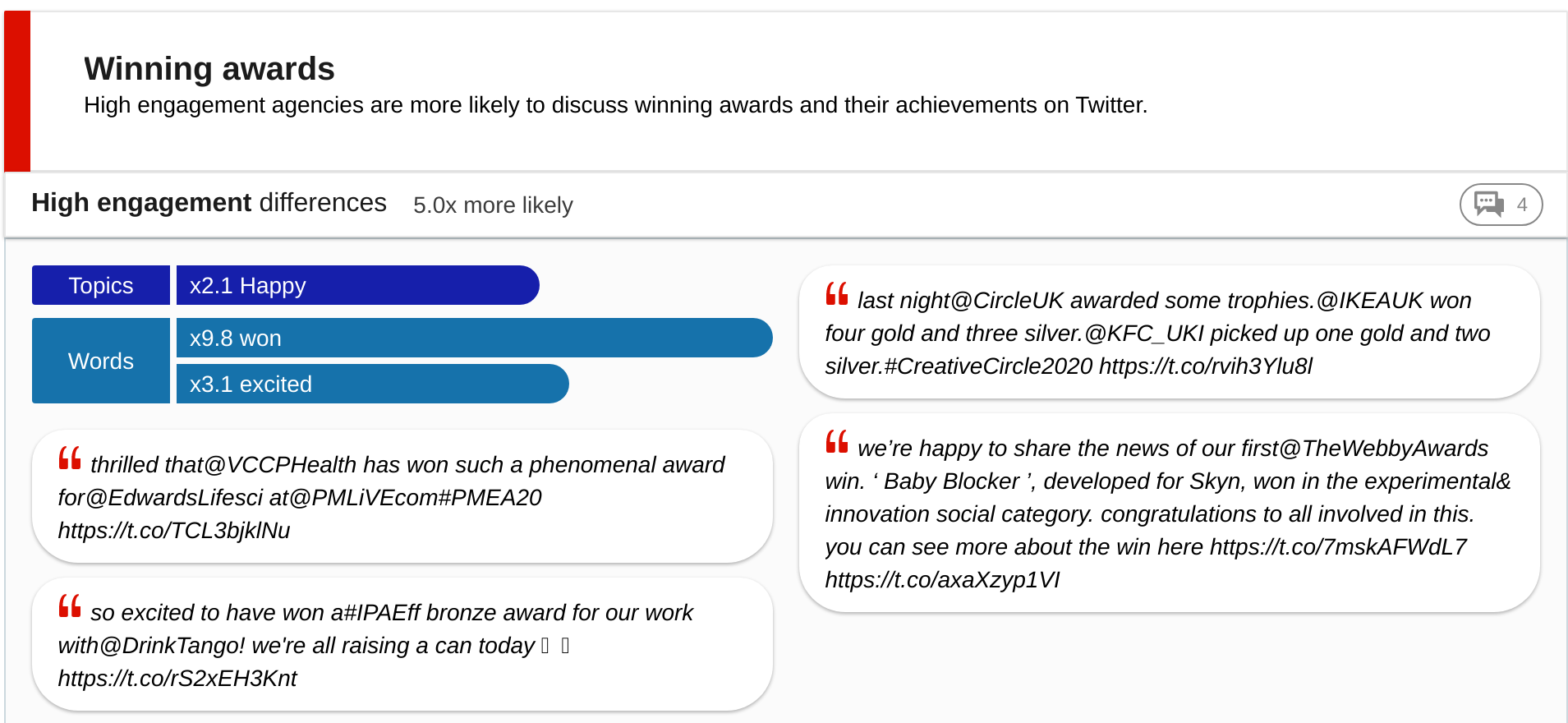

Thought leaders
Thought leaders exist in every industry and provide a competitive advantage to companies who employ them. Agencies with higher engagement on Twitter are 2.1x more likely to refer to thought leaders and people in power – CEOs, directors, chief officers, heads of departments. In doing so, these agencies put a face to the company, showcasing the people hard at work behind the scenes. As Rebecca Kowalewicz from Clearbridge Branding Agency suggests, this allows “others to see the human side of the company and who they may be working with if they sign with you.”
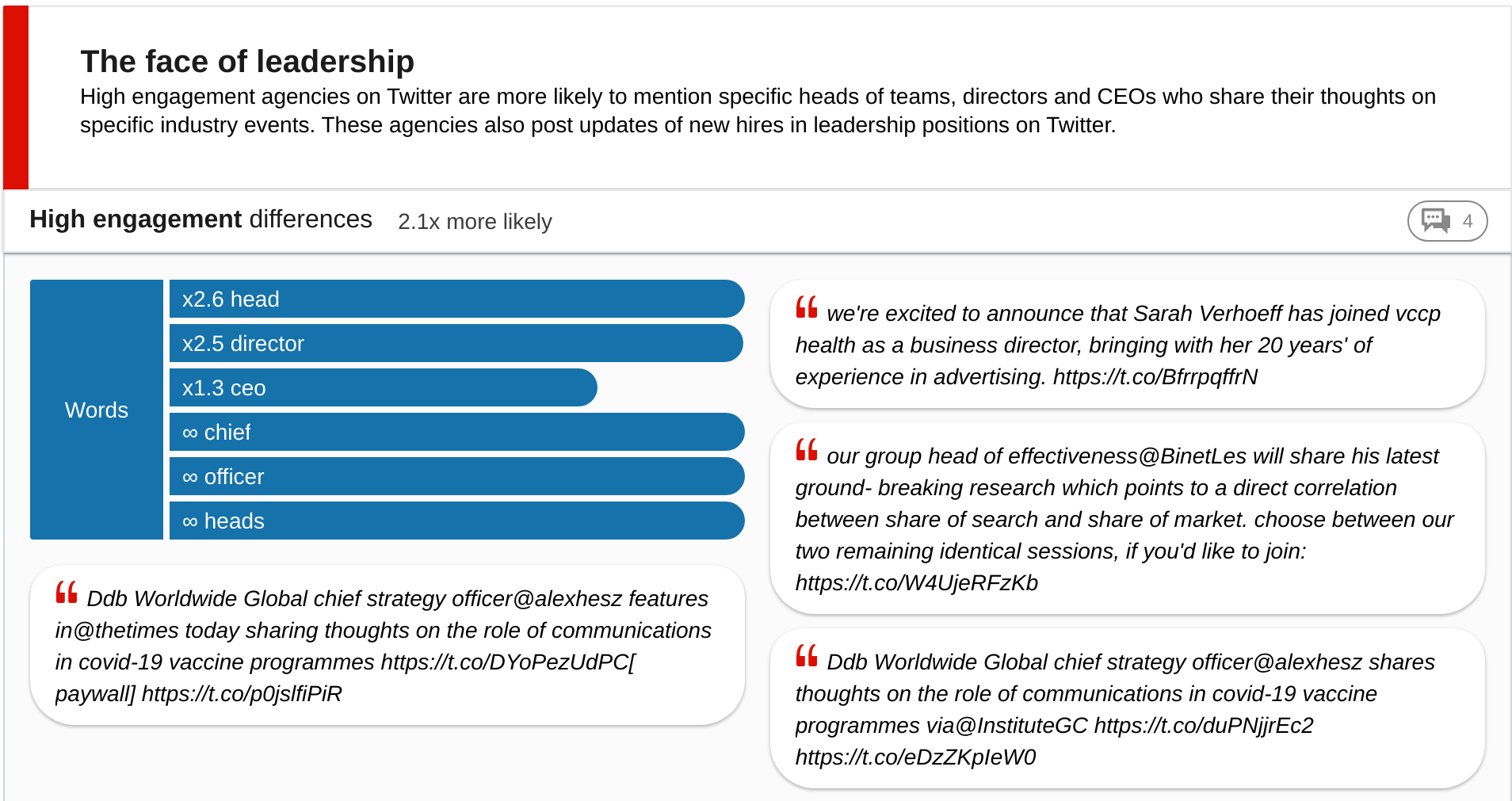

Similarly, agencies with higher engagement are 3.3x more likely to discuss the latest research or ground-breaking studies, highlighting their authority and prominence in the industry. By promoting these learnings, agencies create signals of credibility.
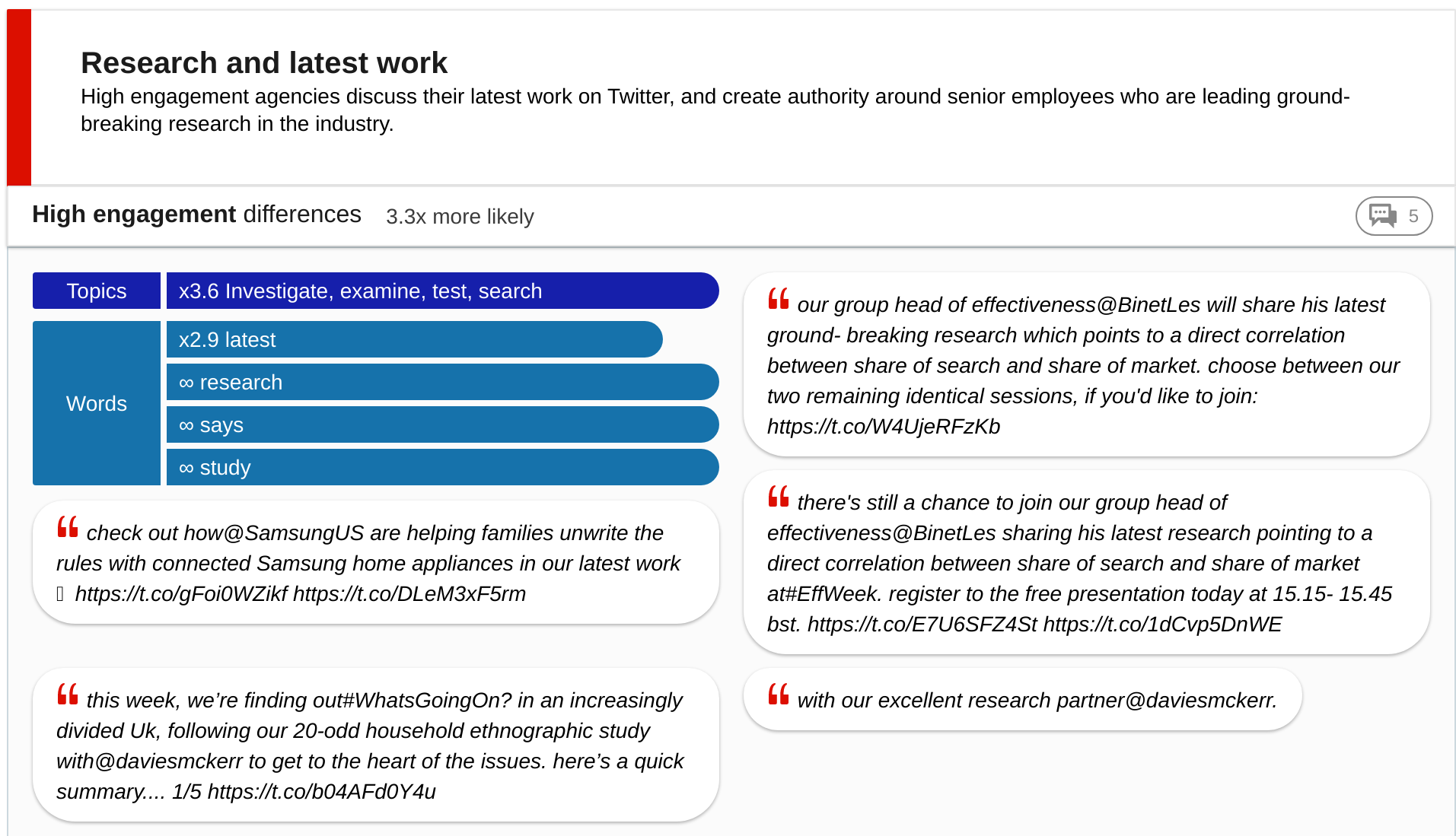

Female empowerment
Most organizations are committed to workplace diversity and gender equality. However, it’s interesting that agencies with higher engagement on Twitter are 9.4x more likely to talk about feminism on the whole. Words such as women’s, girls and females are infinitely more likely to appear in this group, along with specific hashtags to raise the profile of creative women. Therefore, by discussing female empowerment, agencies connect with their audiences on Twitter, who are likely to be invested in social movements.
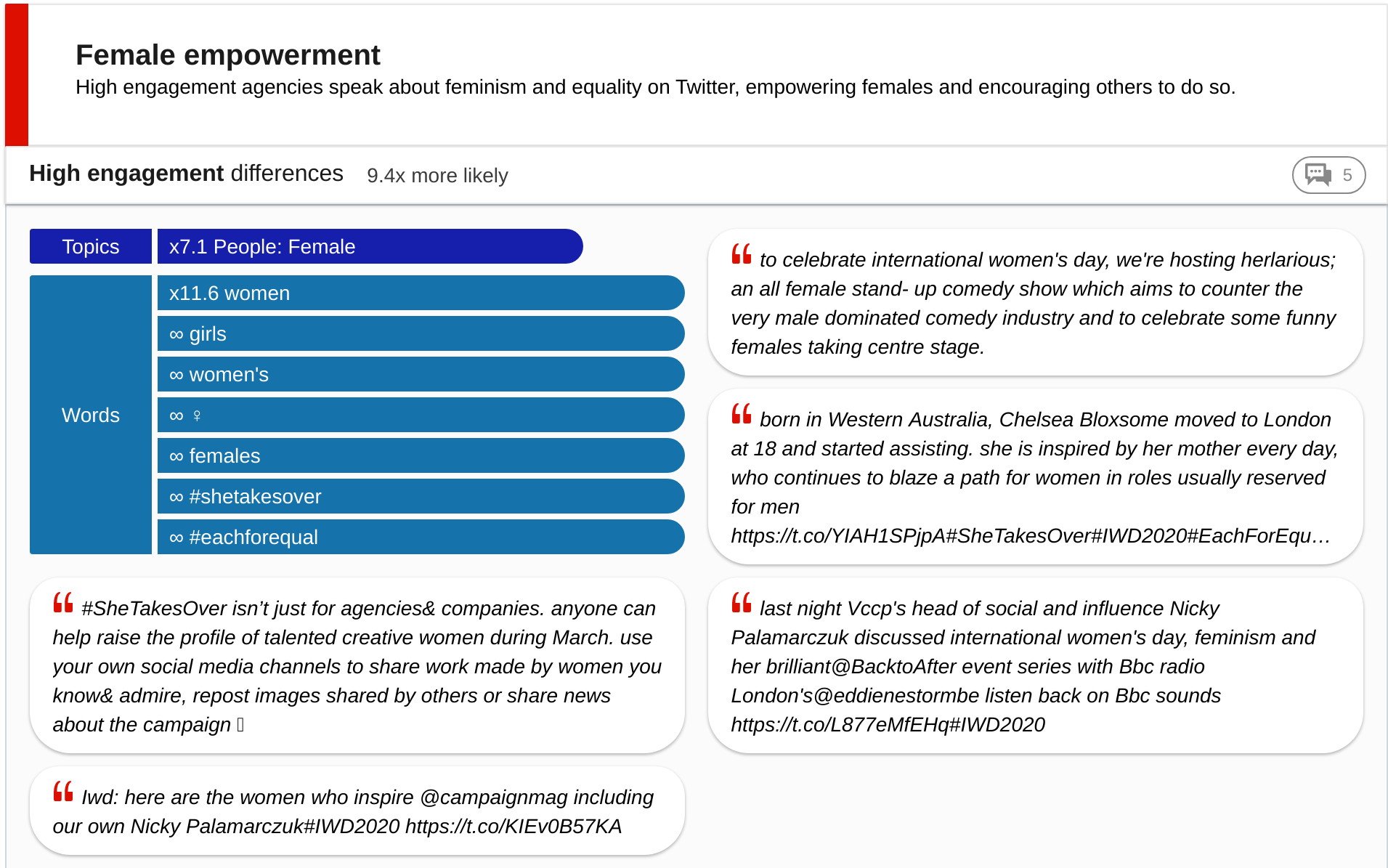

Low engagement agencies
Modest tone of voice
In comparison to agencies with high social engagement, agencies with lower engagement are more likely to adopt a modest, humbled tone of voice on Twitter. But this isn’t necessarily a negative. Expressing gratitude and showing authenticity in social interactions showcases who you are, which is essential for agency branding.
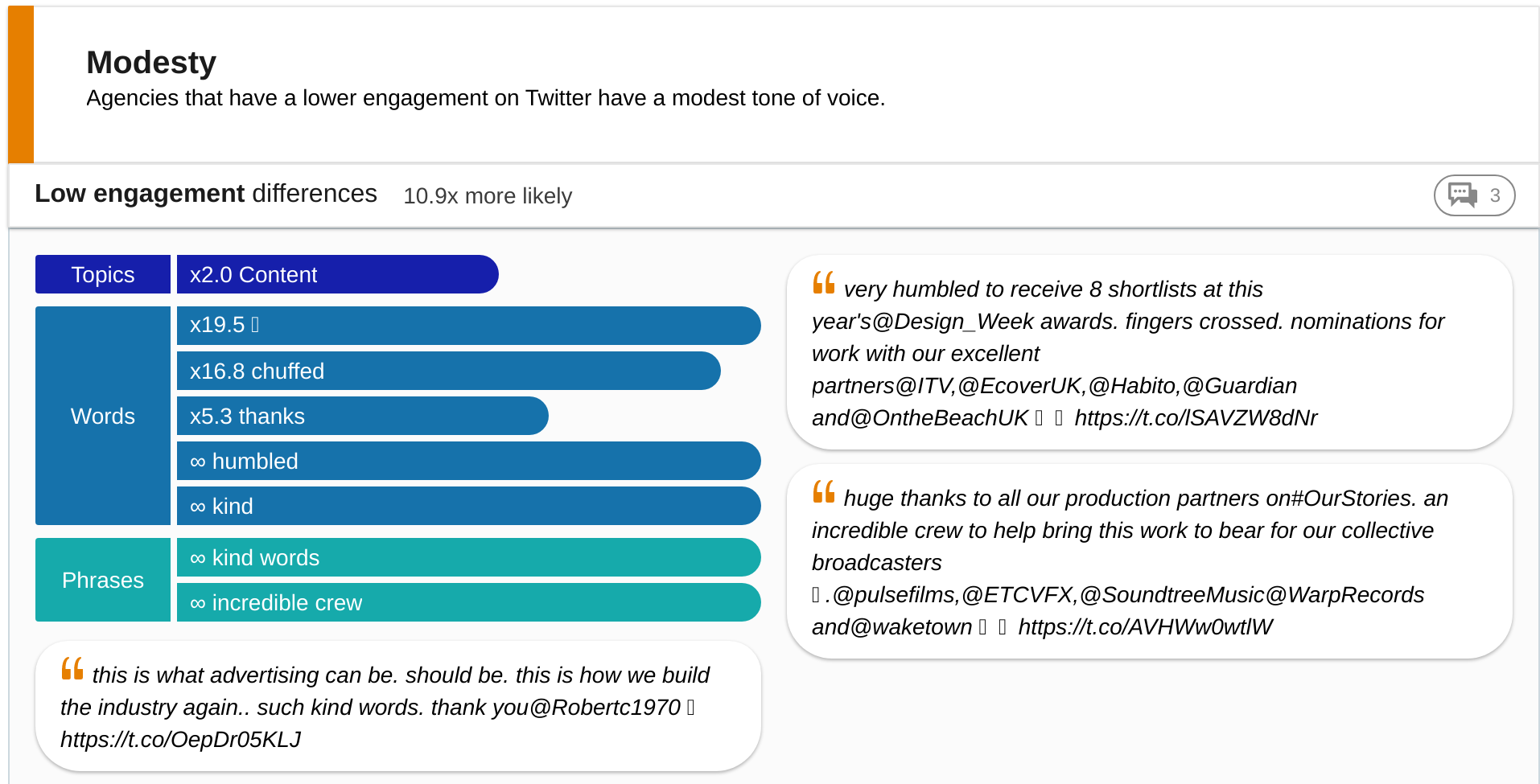

Brand focus
Whereas agencies with high engagement focus on their own achievements, company culture and thought leadership, low engagement agencies have a primary focus on brands. The use of business diction such as business, company, approach and advice appear 5.5x more, often used in the context of how the agency helps brands and businesses grow. Perhaps these agencies should instead aim to convey their own brand mission, core values and empower their employees on social media.
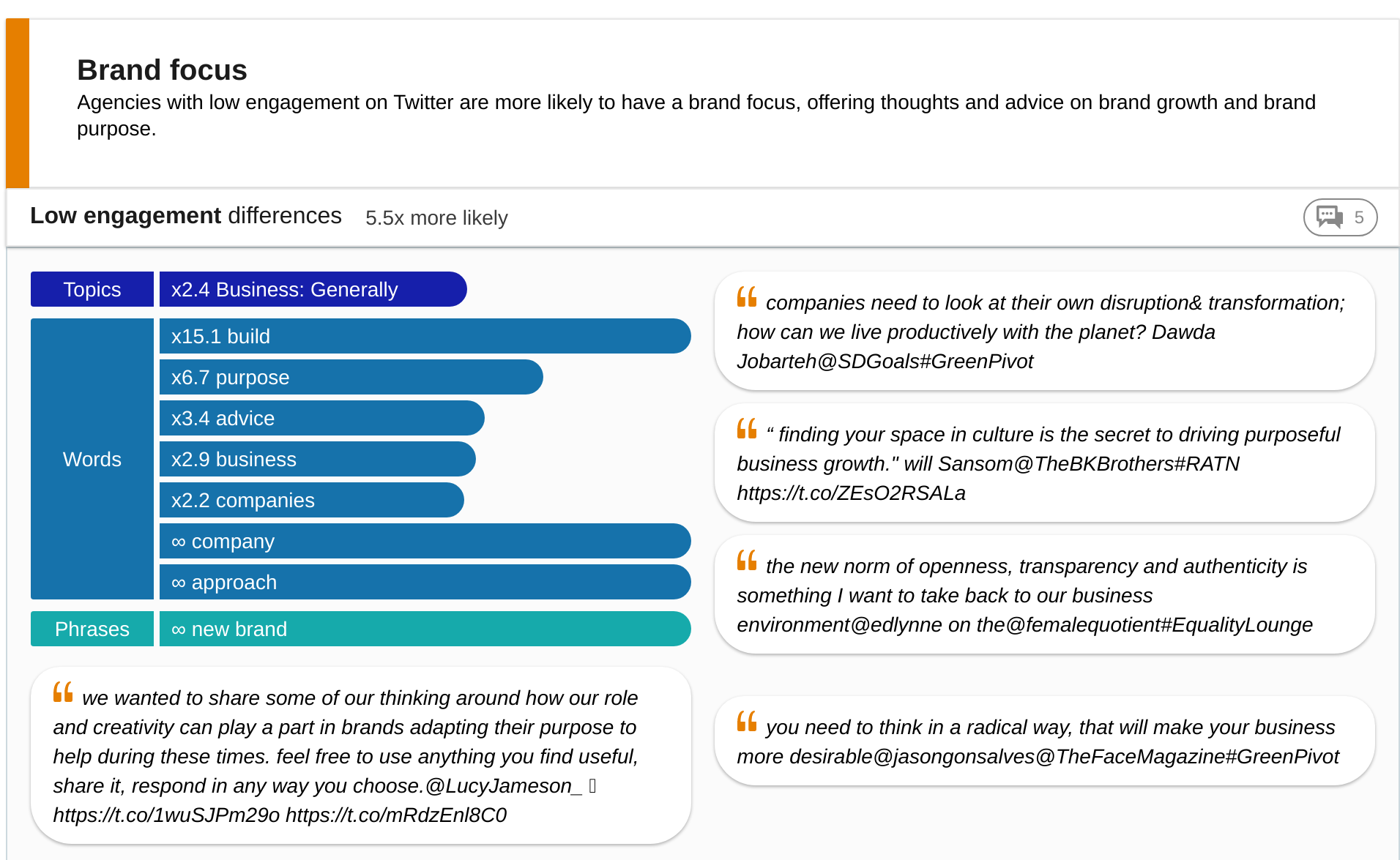

Similarities
People
Although differences are wonderfully insightful, Relative Insight can also spot similarities between data sets. In this case, the word people and together make up 0.4% of words of all eight agencies’ Tweets. In context, this is usually referring to the pandemic and how the creative industry has exhibited a sense of togetherness and collaboration like never before.
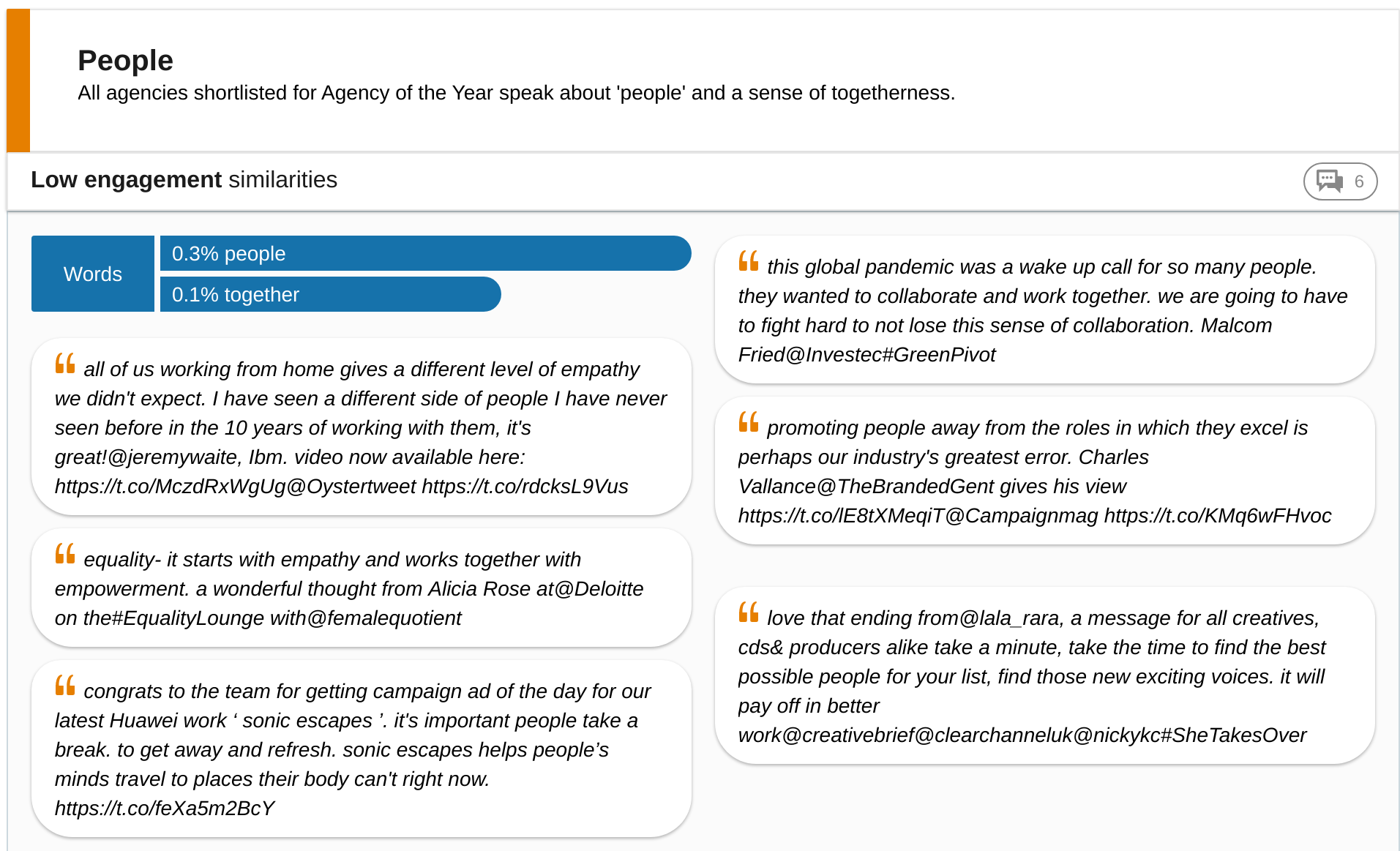

Social media analysis can highlight why competitors have better performing content or social channels than others. In this case, all eight agencies are clearly creative masterminds when it comes to brands. However, those agencies with lower engagement on Twitter should apply the same methodology to their own branding and advertising as they would for clients. To increase engagement, agencies’ use of social content should be consistent. The above linguistic insights could be used to inform social strategy.
Join us on February 25 to hear our stellar panel of speakers from Weber Shandwick, Kindred and Merkley & Partners discusses sophisticated methods that lion and gazelle agencies use to navigate a complicated, ever-shifting landscape.

